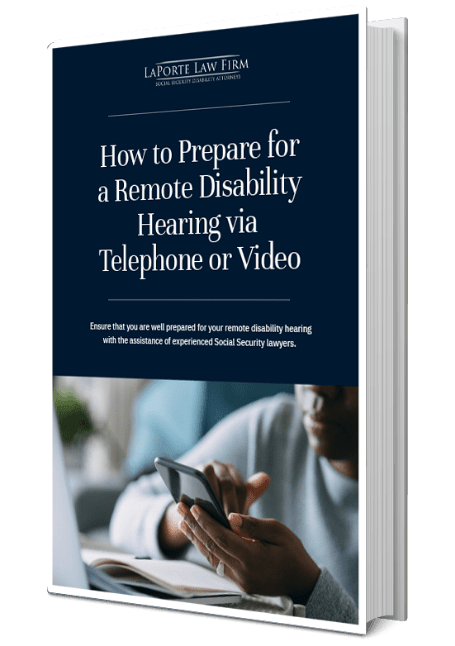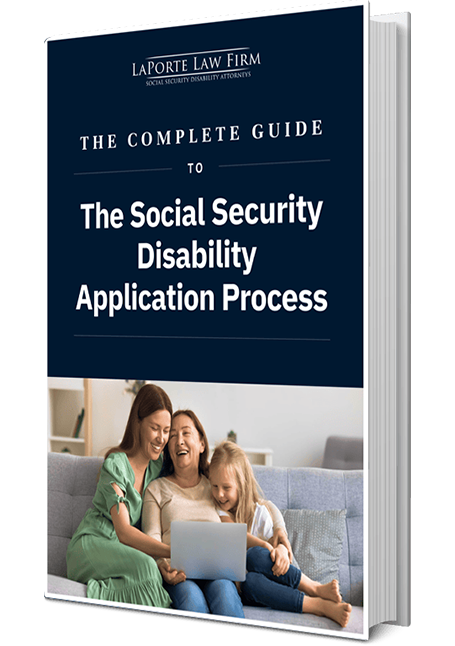
The Social Security program, while primarily designed to support retirees and disabled individuals, also extends to family-based benefits. One of the lesser-known programs is called auxiliary benefits. Directed toward dependent minor-aged children or spouses, these benefits provide essential support in times of need..
In this article, we’ll guide you through the essentials of Social Security auxiliary benefits for children, ensuring you’re equipped with the knowledge to secure a stable future for your family.
Understanding Social Security Auxiliary Benefits
Auxiliary (dependent) benefits are payments made to certain qualifying family members of a disabled worker who is receiving Social Security Disability Insurance (SSDI).
Qualifying family members who may be eligible for auxiliary benefits include:
- The disabled worker’s spouse, if they are:
- Age 62 or older; or
- Caring for the disabled worker’s child who is under age 16 or disabled.
- The disabled worker’s children, if they are:
- Unmarried and under age 18;
- 18–19 years old and a full-time student (not beyond Grade 12); or
- Over 18 and have a disability that began before age 22.
These auxiliary benefits are paid in addition to the SSDI benefits the disabled worker receives. They do not reduce the amount the worker gets. However, there is a family maximum limit, typically 150–180% of the disabled worker’s full SSDI benefit, which may reduce each eligible recipient’s benefit proportionally if the combined total exceeds the allowable maximum.
Importance of auxiliary benefits for families
When a primary wage earner becomes disabled, the resulting loss of income can be devastating for families. Social Security auxiliary benefits help bridge this gap by providing a steady source of income to cover essential expenses, such as housing, food, and utilities, thereby reducing the risk of poverty and enabling long-term financial stability. These benefits also support children and dependents through major life transitions by ensuring continuity in education, promoting emotional well-being, and improving long-term outcomes for families. By offering both immediate relief and lasting support, auxiliary benefits play a crucial role in helping families stay resilient during difficult times.
Eligibility Criteria for Children
Eligibility requirements for Social Security auxiliary benefits vary depending on the age of the children.
Requirements for minor children
Children may qualify for Social Security auxiliary (dependent) benefits when a parent becomes disabled and receives SSDI, as long as specific requirements are met. First, the disabled parent must be eligible for SSDI, which means they must have a medically determined condition that meets the Social Security Administration’s (SSA) definition of disability and have a sufficient work history, typically having worked and paid Social Security taxes for at least 5 out of the last 10 years before becoming disabled (though this varies by age).
Children who may qualify include the worker’s biological children, legally adopted children, and dependent stepchildren. For stepchildren to qualify, they must demonstrate financial dependency on the disabled parent, relying on the parent for at least half of their support. This dependency must have been established before the parent became disabled.
To receive benefits, the child must be a minor-aged child who meets the marital status requirements. Specifically, the child must be unmarried. A child who marries is generally no longer eligible for auxiliary benefits unless the marriage ends or, in the case of a disabled adult child, the marriage is to another individual receiving certain Social Security benefits.
Establishing residency in the disabled worker’s home is not required. The child does not need to live in the same household as the disabled parent. However, the relationship and dependency requirements must still be met. For example, a stepchild living elsewhere can still qualify if dependency can be proven.
Benefits for children age 18–19 in secondary school
Typically, child auxiliary benefits are only available to children under the age of 18. However, child auxiliary benefits are also available to 18- or 19-year-olds who are unmarried and are still enrolled full-time in a secondary school. This provision ensures continued support for older teens who are still completing their high school education.
Secondary schools include public, private, or home schools that meet state education requirements and include middle and high school (Grades 6 through 12). Postsecondary institutions such as colleges, universities, vocational, or trade schools do not qualify under this rule, so benefits generally end once the child graduates from high school or turns 19, whichever comes first.
To continue receiving benefits past age 18, students must submit proper documentation to the SSA. This includes Form SSA-1372, which confirms that the student is attending school full time (defined as at least 20 hours per week) and expects to remain enrolled through a specified date. A school principal, guidance counselor, or registrar must sign the form to verify enrollment and attendance.
The SSA may request updates during the school year, and benefits will stop if the student drops below full-time status, graduates, or turns 19 before the end of the school year. Accurate and timely submission of this documentation is essential to ensure uninterrupted benefits during this transition phase in a young person’s life.
Eligibility Criteria for Spouses
Spousal benefits under SSDI allow the spouse of a disabled worker to receive monthly payments based on the disabled worker’s earnings record, provided certain criteria are met. To qualify, the spouse must meet one of the following conditions: they must be at least 62 years old, or any age if they are caring for the disabled worker’s child who is either under age 16 or disabled. In cases where the spouse is applying based on age (62 or older), their benefit may be reduced if they begin receiving it before reaching full retirement age, which ranges from 66 to 67 depending on the year of birth.
To apply, the spouse must provide specific documentation to the SSA, including proof of marriage, such as a certified marriage certificate, and proof of age, typically a birth certificate or another government-issued ID. If applying as a caregiver for a child under 16 or disabled, additional documents are needed, such as the child’s birth certificate and Social Security number. The SSA may also request documents proving the spouse’s citizenship or lawful immigration status, and if the couple was previously married to others, divorce decrees or death certificates may be required to verify marital history.
Application Process and Documentary Requirements
Applying for auxiliary benefits is a relatively simple process. You’ll need to reach out to the SSA and submit the required forms and documentation.
Steps to apply
When a disabled worker applies for SSDI, it is essential that they list the names of their spouse and any children who may qualify for auxiliary benefits on their initial application. This step is crucial because it helps establish a protected filing date not only for the disabled worker’s benefits, but also for those of their eligible dependents. A protected filing date ensures that if the dependents are later approved, their benefits can be backdated to that initial application date, potentially resulting in several months of retroactive payments.
However, listing dependents on the worker’s application does not automatically enroll them for benefits. Once the SSDI case is processed and approved, the local Social Security office will require a separate application to be filed for each auxiliary beneficiary. Typically, the SSA will schedule an in-person appointment to complete this step. During the appointment, the spouse or child’s guardian will need to bring specific documentation, such as birth certificates, Social Security cards, proof of relationship, and, in some cases, proof of school attendance.
This two-step process, first listing eligible family members during the initial claim and then completing individual applications with documentation, ensures that the entire family receives the benefits they are entitled to while securing the earliest possible start date for payments. Failing to list dependents at the time of the original application can delay or reduce the amount of auxiliary benefits the family may ultimately receive.
Necessary documentation
When applying for auxiliary benefits, the documents you need to provide will vary depending on your relationship to the primary beneficiary.
- Child benefits
The SSA-4-BK form, known as the “Child’s Application for Benefits,” collects detailed information about the child and their eligibility for auxiliary benefits. The form requires the child’s full name, Social Security number, date of birth, and place of birth, as well as the child’s current address and information about who is applying on the child’s behalf, if applicable. It also asks for details about the child’s relationship to the disabled or retired worker, whether they are a biological child, a legally adopted child, or a dependent stepchild, and whether the child is unmarried.
The form includes questions about the child’s school attendance if they are age 18 or older, and if applicable, inquiries about any disability status to determine continued eligibility for benefits past age 18. Additionally, SSA-4-BK requires information about the parents’ marriage or divorce status to confirm eligibility.
When submitting the SSA-4-BK, specific documentation must accompany the application to verify the child’s identity, relationship to the worker, and eligibility. Required documents typically include the child’s original birth certificate, Social Security card, and proof of parent-child relationship, such as a marriage certificate (for a spouse applying on behalf of a stepchild) or adoption papers.
- Spousal benefits
The SSA-2 form, known as the “Application for Wife’s or Husband’s Insurance Benefits,” requires detailed personal information, including the spouse’s full name, Social Security number, date of birth, and current address. It also asks for information about the marriage, such as the date and place of marriage, and whether the spouse has been married previously, in which case details and documentation regarding any prior divorces or deaths of former spouses are necessary. The form requests information about the disabled or retired worker, including their name, Social Security number, and date of birth, to establish the connection. The applicant must also provide information about any children under the age of 16 or disabled children in their care if applying based on caregiving status.
In addition to the form, applicants must submit supporting documentation to prove eligibility. This typically includes a certified marriage certificate to verify the legal relationship, the spouse’s birth certificate or other proof of age, and the worker’s Social Security number. If applicable, divorce decrees or death certificates from prior marriages are required to confirm marital status and eligibility.
When applying as a caregiver, the applicant must provide the child’s birth certificate, the child’s Social Security number and proof of the child’s disability if relevant. Identification documents such as a government-issued photo ID may also be required during the application process.
Timeline expectations
The typical processing timeline for auxiliary benefits usually begins once the disabled worker’s application is approved. Generally, after the primary SSDI claim is approved, it can take anywhere from a few weeks to several months for auxiliary benefits to be processed and awarded. This timeframe depends on factors such as the completeness of the applications for dependents, the accuracy of submitted documentation, and the workload of the local Social Security office.
Potential delays can also occur if there are discrepancies in the paperwork, unclear information about family relationships, or if the SSA needs to verify the child’s full-time student status or disability. In some cases, if a child is 18 or 19 and still in school, benefits may be temporarily suspended pending receipt of the SSA-1372 form to confirm continued eligibility.
Maximum Family Benefit Amounts
The SSA calculates the maximum family benefit (MFB) to limit the total amount of benefits paid to a family based on one worker’s earnings record. The MFB is typically set between 150% and 180% of the disabled or retired worker’s full benefit amount, depending on the worker’s primary insurance amount and specific family circumstances. This cap ensures that the combined monthly benefits paid to the worker and all eligible auxiliary beneficiaries do not exceed this maximum limit.
When the total amount of individual benefits for the worker and their family members exceeds the MFB, the SSA reduces the auxiliary benefits proportionally to bring the total within the allowed maximum. The reductions are applied to the benefits of the spouse and children, which means that each auxiliary beneficiary may receive less than their full entitled amount. This ensures fairness while keeping the overall benefit payments within statutory limits.
Impact on total SSDI amounts
Adding auxiliary benefits for a disabled worker’s dependents does not reduce the worker’s primary SSDI payment. The disabled worker will continue to receive their full monthly benefit based on their earnings record and disability status, regardless of how many family members qualify for auxiliary benefits. This ensures that the worker’s financial support remains stable and unaffected by the presence of dependents.
Duration of Benefits
As discussed, child auxiliary benefits typically last until the child turns 18 years old. However, if the child is 18 or 19 years old and still attending high school full time, benefits can continue until they graduate or turn 19, whichever comes first. After that point, auxiliary benefits generally end unless the child qualifies based on a disability.
Meanwhile, spousal auxiliary benefits typically last until the marriage ends or if the spouse becomes eligible for their own Social Security benefits that are higher.
If the disabled worker passes away, their spouse and children may become eligible for survivor benefits through Social Security. A surviving spouse can receive survivor benefits if they are at least 60 years old (or 50 if disabled) or at any age if they are caring for the deceased worker’s child who is under 16 or disabled. Children who are unmarried and under 18 years old (or up to 19 if still in high school full time) may also qualify for survivor benefits.
If you’re navigating the challenges of applying for Social Security disability benefits — whether for yourself or a family member — LaPorte Law Firm is here to help. Our experienced team understands how overwhelming these situations can be, and we’re committed to making it as clear and stress-free as possible. Contact us today for a free consultation — we’re ready to support you and your family.
FAQS
A dependent child can typically receive up to 50% of the disabled worker’s full SSDI benefit as an auxiliary benefit. However, the exact amount may be lower if the family’s total benefits exceed the maximum family benefit limit, in which case the child’s benefit could be reduced proportionally along with other auxiliary benefits.
Yes, children who are 18 or 19 years old can still receive Social Security auxiliary benefits if they are full-time students in a secondary school (typically high school). Benefits continue until the child either graduates, stops attending school full time, or reaches age 19, whichever comes first. After age 19, benefits generally end unless the child is disabled and meets specific eligibility criteria.
If your family’s total Social Security benefits, including the disabled worker’s payment plus all auxiliary benefits for the spouse and children, exceed the maximum family benefit limit, the SSA will reduce the auxiliary benefits to bring the total payments within that limit. The worker’s own SSDI benefit is never reduced, but the benefits paid to the spouse and children are proportionally lowered. This means each dependent may receive less than their full individual benefit amount so that the family’s total monthly benefits do not surpass the maximum allowed.















